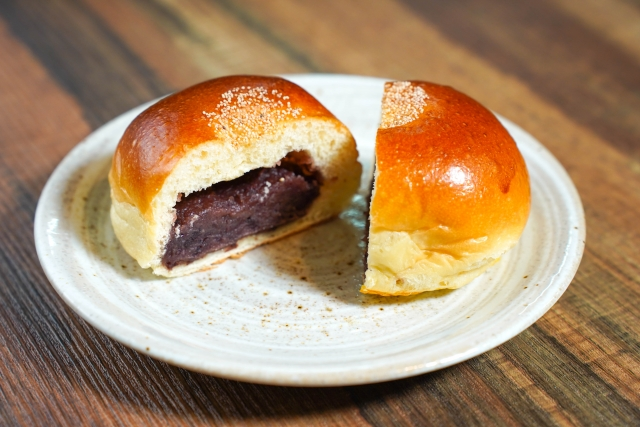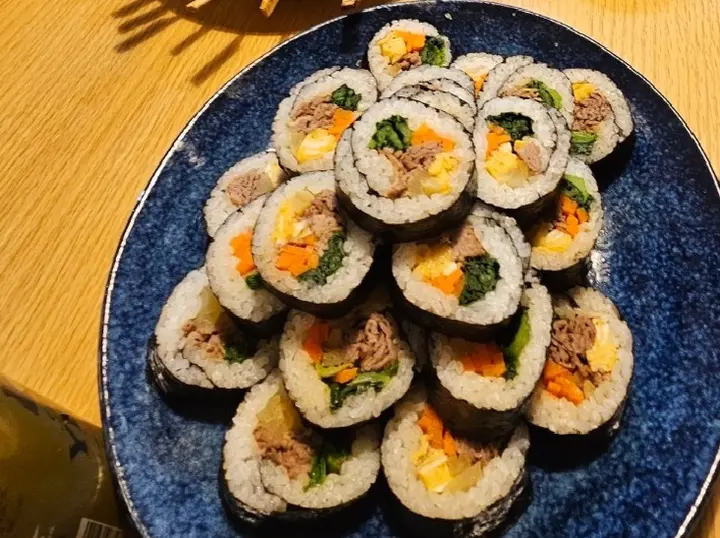
🥯 An Pan (Red Bean Buns): A Comforting Taste of Japan
If I had to pick one sweet that brings me back to childhood in Japan, it would be anko—sweet red bean paste. Made from azuki beans, anko is a beloved staple across East Asia, commonly used in Japanese, Korean, and Chinese desserts. It's a versatile treat, pairing beautifully with bread, pancakes, rice cakes, and even doughnuts.
What’s more, anko is naturally low in fat (without butter or oils) and packed with complex carbohydrates, which has helped it gain popularity as a "healthy sweet" in countries like the US and across Europe.
While making anko from scratch can be quite labor-intensive and technical, it’s widely available in Japanese and Asian supermarkets all year round—making it easy to enjoy even if you're short on time.
🍡 Anko & TraditionIn my hometown in northern Japan, mochi with anko is a must-have during New Year’s celebrations. Eating it always makes me feel a little nostalgic and overwhelmed in the best way—like reliving a special holiday memory.
There are two main types of anko:
- Tsubu-an (つぶあん): Chunky style, with pieces of azuki bean skin for added texture.
- Koshi-an (こしあん): Smooth and silky, made by straining out the skins.
People often debate which one is better, but for me, Tsubu-an has always been the winner!
🍞 What is An Pan?An Pan (あんパン) is a soft, fluffy bun filled with sweet red bean paste. "An" refers to the bean paste, and "pan" is the Japanese word for bread, derived from Portuguese.
It's a classic snack loved by people of all ages in Japan—sweet, satisfying, and perfect with a cup of green tea or coffee.
🧑🍳 Homemade An Pan Recipe (Makes 6 buns) 📝 Ingredients:- 100g anko paste (Tsubu-an or Koshi-an—your choice!)
- 220g bread flour
- 120ml milk (warmed to about 40°C)
- 1 egg (beaten, half used in dough and half for egg wash)
- 20g sugar
- 2g salt
- 3g dry yeast
- 20g unsalted butter (softened)
🥖 Step-by-Step Instructions 1. Make the Dough
In a large bowl, mix together bread flour, sugar, salt, and yeast. Add warm milk and half of the beaten egg. Mix with a spoon or rubber spatula until sticky.
2. Knead the DoughTransfer the dough to a clean surface. Knead for 10 minutes until it becomes smooth and elastic.
3. Add ButterDon’t worry if it sticks to your hands at first—it gets better!
Add softened butter and knead for another 5 minutes. The dough should stretch thinly without tearing when ready.
4. First ProofPlace the dough in a bowl, cover with plastic wrap or a damp cloth, and let it rise in a warm place (30–40°C) for about 40 minutes, or until doubled in size.
5. Proof TestGently press a finger into the center of the dough. If the dent remains, it’s ready.
6. Divide and RestDivide the dough into 6 equal pieces, shape into balls, and let them rest for 10 minutes under a cloth.
7. Fill with AnkoFlatten each dough ball, place a spoonful of anko in the center, and wrap the dough around it, pinching to seal. Reshape into a round bun.
8. Second ProofPlace buns on a baking tray lined with parchment paper. Cover and let rise again for 20 minutes.
9. BakePreheat the oven to 180°C (356°F). Brush the tops with the remaining beaten egg for a shiny finish.
Bake for 15–20 minutes, or until golden brown.
🍽️ Enjoy Your Homemade An Pan!Fresh out of the oven, these buns are soft and slightly sweet with a comforting anko center. Whether you grew up with them or are trying them for the first time, An Pan is a warm hug in every bite.
Meshiagare! (Enjoy your meal!)



























